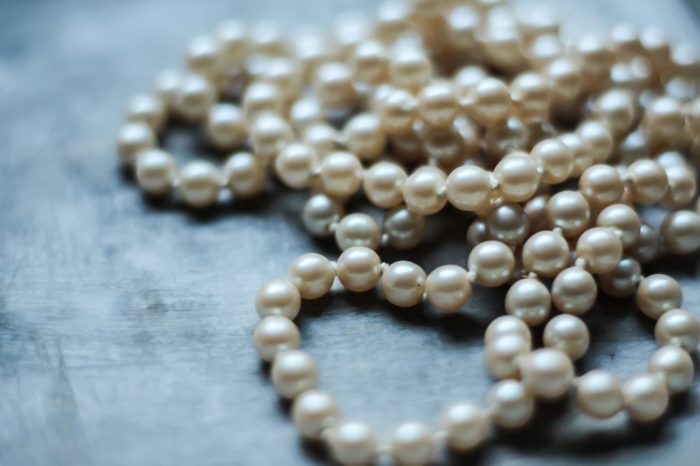The Queen of Gems and the Gem of Queens: Fascinating Facts You Probably Never Knew About Pearls

Pearls are without a doubt one of the all-time grand classics of jewelry. Whether fashioned into a simple strand of pearls, an elegant choker or worn as a bracelet and earrings set, freshwater and saltwater pearls are among Mother Nature’s most marvelous works.
Four things you didn’t know about pearls
Natural pearls are formed within the body of a mollusk that’s related to garden snails. Pearls are formed to protect the oyster’s fleshy parts from an irritant such as a grain of sand or, in the case of cultured pearls, a bead made of mussel shell.
Over the course of their lifetime, oysters may switch genders several times. Most oysters start out as males and switch to the female sex after a period of time. If a community or ‘bed’ of oysters has too many females, a similar number will switch sexes to even out the gender population.
The surface of a cultured or natural pearl may look smooth as silk, but it’s actually as coarse as fine-grit sandpaper. The nacre that makes the pearly surface comprises zillions of microscopic crystals. That’s why an old-school authentication test is to gently scrape a pearl against your front tooth. A real pearl will feel gritty when rubbed against a tooth.
The most notable pearl ever produced is named “La Peregrina,” or “the incomparable.” The massive pear-shaped gem has been owned by Napoleon, Queen of England Mary Tudor, and Hollywood actress Elizabeth Taylor.
Pearls from clams?
It may come as a surprise, but not all pretty jewelry pearls come from oysters. Although that’s the creature most commonly associated with natural pearls, the gem of queens may also come from mussels or clams, explains the Oyster Recovery Partnership.
The art of culturing pearls was perfected by the son of a Japanese noodle maker. Kokichi Mikimoto experimented with several irritants before coming across the perfect matrix for cultivated pearls in 1893.
Until relatively recent years, pearl harvesting was a dangerous business. Less than one hundred years ago, the mortality rate for freediving pearl harvesters was approximately 50 percent. “Rapture of the deep” and nitrogen narcosis were common to people (mostly women) who dived for pearls. 21-century protocols and regulations now make pearl harvesting a far less hazardous occupation.
Six more things you might not have known about pearls
Harvesting a pearl does not necessarily kill the oyster that made it. In fact, most oyster farmers tend their beds quite carefully, as oysters produce bigger and better pearls as they age. It takes an adult oyster approximately five years to produce on medium sized pearl, says Town and Country magazine.
Pearls are available in eight basic shapes. Round, semi-round, and baroque are among the most popular pearl shapes, with pear, oval, circled, button, and drop shapes following close behind, explains UK Express. Strands of pearls come in a variety of sizes, including collars, chokers, princess length, matinee length, opera length, or classic rope styles.
If your grandmother told you to stay away from oysters during months that contain the letter R, forget it. In fact, oysters may be at their most delicious and meatiest during months with an R. The tasty little mollusk delivers a super dose of zinc, calcium, vitamin C, and omega 3 fatty acids. Low in cholesterol and high in protein, oysters ma
ke a yummy addition to chowders and flavorful seafood stews.
Pearls come in a rainbow of colors that range from creamy white to blackest black, In between, pearls are seen in shades of beige, pink, yellow, gray, and blue. To see pearly colors in all their glory, spend some time browsing the pages of the Parelketting catalog.
Double the aphrodisiac
Legendary lover, Casanova, is said to have dined on oysters every evening, and we see how that worked for his reputation. The lovely goddess, Aphrodite, is said to have emerged from the depths of the sea whilst riding an oyster. The rumor that oysters boost libido may have no basis in science, warns Mental Floss. This is no reason not to try, though. We can’t promise that eating oysters will make you a great lover, but we can tell you that a woman who receives a lovely strand of pearls may feel exceptionally romantically inclined.
Pearls are the only gemstone made entirely by nature. No faceting or polishing required, pearls make a timeless statement that speaks of elegance, class, and the boundless beauty of the ocean.

